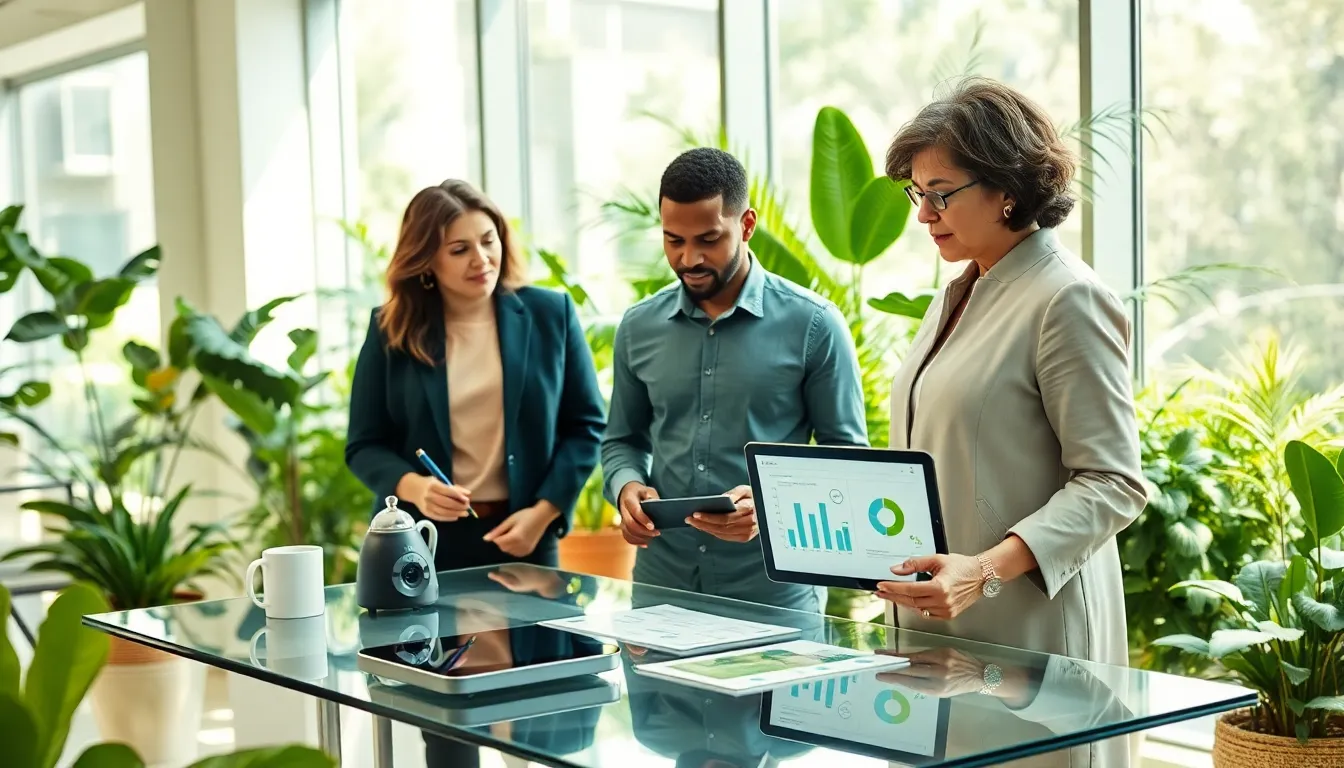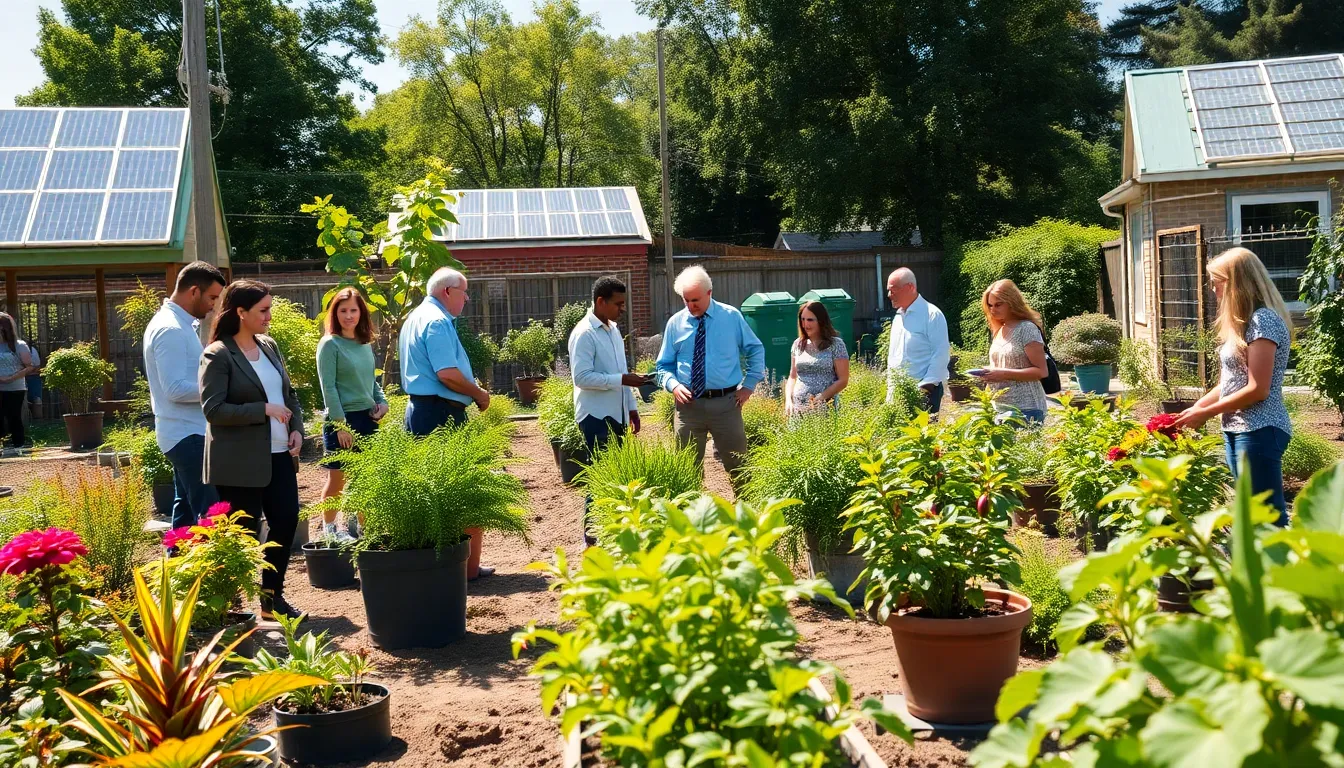Table of Contents
ToggleImagine waking up in a world where air is clean, oceans are thriving, and communities radiate happiness. Sustainable living isn’t just a trendy hashtag: it’s a lifestyle choice with a hefty impact. Not only does it help save our planet, but it also boosts economies and enhances social well-being. If you think that small actions don’t matter, buckle up, because today, we’re diving into the myriad benefits of living sustainably, and trust me, it’s more than just composting your leftovers.
Environmental Benefits of Sustainable Living

Reduction of Carbon Footprint
One of the most significant impacts of sustainable living shows up in the drastic reduction of carbon footprints. By simply choosing to bike to work instead of driving, using energy-efficient appliances, or shunning single-use plastics, individuals can contribute to lower greenhouse gas emissions. This doesn’t solely benefit their local environments: it has a global impact as well. Less carbon means a healthier atmosphere, fewer climate change issues, and plenty of future generations enjoying the great outdoors.
Conservation of Natural Resources
Sustainable living champions the wise use of our natural resources. Think about it, a life where individuals prioritize recycling, reusing, and reducing means less waste in landfills and oceans. By conserving water through efficient practices, using renewable energy sources like solar and wind, and promoting local produce, people can ensure that finite resources don’t vanish overnight. Keeping our natural resources safe not only sustains the earth but also secures its health for future inhabitants.
Enhancements to Biodiversity
Sustainable living directly contributes to the enhancement of biodiversity. By protecting natural habitats and encouraging sustainable farming practices, individuals support diverse ecosystems. Diverse ecosystems can resist and recover from environmental stressors better than homogenous ones. More species mean more balanced environments, which contribute to a healthier planet. This biodiversity boosts resilience against pests and diseases while ensuring food security.
Social Impact of Sustainable Living
Community Engagement and Awareness
When people adopt sustainable living practices, they often find themselves engaged in their communities. Initiatives like community gardens, clean-up drives, or local farmer’s markets foster connections among residents while enhancing environmental awareness. It’s a ripple effect, one sustainable practice can inspire others to join in, promoting a collective approach to environmental stewardship.
Health Benefits for Individuals and Communities
Sustainable living doesn’t just nurture the planet: it nurtures people too. Health benefits stem from cleaner air and reduced pollution, leading to a decrease in respiratory illnesses. Communities that prioritize green spaces also encourage outdoor activities, naturally leading to healthier lifestyles. When the earth thrives, so do its people.
Economic Aspects of Sustainable Living
Cost Savings Through Energy Efficiency
It’s no secret that sustainable living can lead to substantial cost savings. Energy-efficient appliances reduce utility bills, while sustainable transport options, like biking or public transport, cut commuting costs. Also, individuals increasingly find that investing in sustainable products translates to long-term financial benefits, often saving money down the line.
Job Creation in Green Industries
The shift toward sustainability isn’t just beneficial for the environment: it’s also a boon for the economy. As more companies adopt green practices, new jobs are created in renewable energy, sustainable agriculture, and eco-friendly product development. This transformation in the job market reinforces the idea that a sustainable future equals a prosperous one.
Challenges and Barriers to Sustainable Living
Overcoming Common Misconceptions
Even though the clear benefits of sustainable living, misunderstandings abound. Many individuals perceive it as too complicated or cost-prohibitive. But, small changes, like using reusable bags or growing herbs at home, can lead to considerable impacts. Educating communities about the simplicity and practicality of sustainable practices dispels these myths and motivates action.
Addressing Accessibility and Affordability
For some individuals, financial constraints or lack of access to resources can hinder sustainable living. Solutions have to be implemented to ensure that sustainable products and practices are affordable, urging governments and organizations to step up. Offering subsidies for solar panels or community workshops on sustainable gardening can make these practices accessible for everyone.




